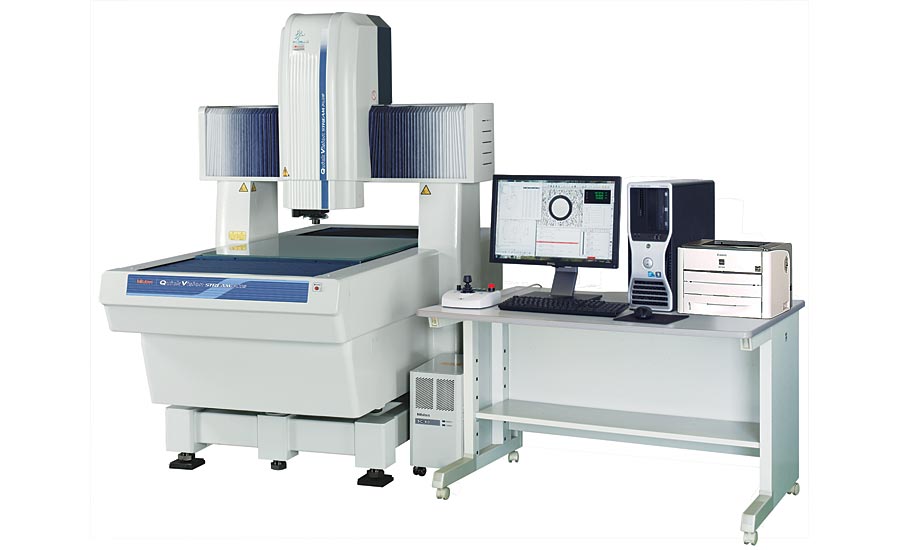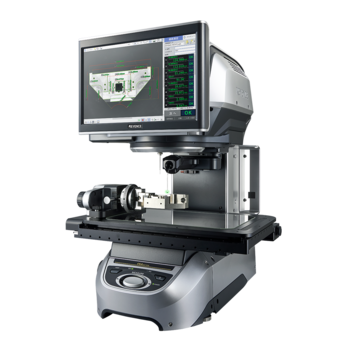7 quality control challenges solved by optical measurement systems
The Duty of Optical Measurement Solutions in Progressing Assessment Techniques
Optical measurement systems have actually transformed metrology, bringing a level of precision that was as soon as unthinkable. You could be stunned to find out exactly how these modern technologies, based upon essential principles like representation and interference, are used across various industries. Their non-contact abilities not only boost precision yet likewise enhance processes. As you discover even more, you'll find how these systems are forming the future of measurement and quality assurance.
The Advancement of Assessment: A Historic Viewpoint
As you check out the background of metrology, you'll discover that its evolution reflects humankind's pursuit for precision and standardization. From old people using body components as units of dimension to the development of standard weights and actions, each action reveals our wish for accuracy. The Egyptians developed the pyramids utilizing precise measurements, while the Romans progressed engineering with their innovative measuring tools.
Throughout the Renaissance, scientific advancements changed the focus towards extra empirical methods, leading the way for contemporary width. The intro of the statistics system in the late 18th century marked a substantial milestone, establishing universal criteria. Throughout the 20th century, technological developments additionally changed width, allowing extremely exact dimensions in numerous areas.
Today, assessment remains to progress, incorporating electronic technology and automation. This history highlights not simply the relevance of dimension however likewise our unrelenting quest of enhancing accuracy and consistency in our progressively intricate globe.
Concepts of Optical Dimension Equipments
Understanding the principles behind optical measurement systems is important for precise cause metrology. You'll want to consider fundamental optical concepts, dimension accuracy variables, and effective system calibration techniques. Each of these aspects plays an important function in guaranteeing your dimensions are trusted and precise.
Essential Optical Concepts
While discovering optical dimension systems, you'll experience essential optical principles that form the foundation of exact information purchase. Light behaves in foreseeable means, and recognizing these actions-- like refraction, diffraction, and representation-- is crucial for effective dimensions. You'll utilize lenses and mirrors to adjust light and concentrate it onto your target, making certain precision in your analyses. Furthermore, the wave nature of light allows for interference patterns, which can boost measurement resolution. Polarization can additionally play a crucial function in distinguishing signal from noise, boosting the quality of your outcomes. By mastering these concepts, you'll be geared up to utilize optical modern technologies efficiently, leading the way for improvements in assessment and ensuring your dimensions are both reputable and repeatable.
Dimension Accuracy Aspects
To attain high dimension accuracy in optical systems, several elements enter play, affecting the dependability of your outcomes. The top quality of the optical parts matters greatly. Premium lenses and detectors lower aberrations and sound, guaranteeing your dimensions are specific. Second, environmental problems like temperature and moisture can affect measurements, so maintaining a stable setting is essential. Third, the alignment of the optical system is vital; even small imbalances can bring about substantial mistakes. Finally, the wavelength of light utilized impacts the resolution and accuracy of your measurements. By addressing these factors, you can enhance the overall performance of your optical dimension systems, causing even more exact and trustworthy cause your assessment applications.
System Calibration Methods
Achieving high dimension precision is only component of the formula; proper system calibration techniques are equally crucial in optical dimension systems. To ensure your system supplies trusted results, you need to on a regular basis adjust it making use of conventional referral materials. Start by readjusting the optical parts, like lenses and mirrors, to minimize methodical errors. Next, utilize well-known dimensions to verify the system's result and make required modifications. It's additionally important to represent ecological factors-- temperature and humidity can impact measurements. Implement a routine calibration routine to keep consistency in time. Ultimately, record all calibration procedures and outcomes; this will certainly assist you track efficiency and address any type of drift in accuracy. With these strategies, you'll boost the integrity of your optical measurement system.
Secret Technologies Behind Optical Dimension
Optical measurement systems depend on several essential modern technologies that boost precision and effectiveness in metrology. One vital modern technology is interferometry, which utilizes the interference of light waves to gauge little variations and surface area irregularities with severe precision. You'll also locate laser scanning systems, which catch detailed 3D data of objects promptly, making them vital for dimensional analysis.
Additionally, CCD and CMOS sensing units play a substantial role in transforming light into electrical signals, permitting high-resolution imaging and accurate dimensions. Advanced formulas for photo processing better enhance measurement accuracy by evaluating data in actual time, removing noise and enhancing attributes.
Lastly, optical fiber offer flexibility and the capacity to measure in tough atmospheres while maintaining signal honesty. By leveraging these technologies, you can accomplish exceptional results in your assessment jobs, making sure that your dimensions are both reliable and precise.
Applications of Optical Measurement in Sector
As industries progressively demand accuracy and performance, the applications of optical measurement systems have come to be crucial across different markets. In production, these systems assist you monitor dimensions and resistances in real-time, making certain quality assurance without taxing manual checks. In the vehicle sector, optical measurements aid in straightening components with precision, enhancing safety and performance.
In electronics, you're utilizing optical approaches to inspect minute attributes on circuit boards, spotting flaws that can lead to failures. The aerospace industry benefits from non-destructive testing strategies, allowing you to evaluate materials and components without jeopardizing their honesty.
Optical dimension additionally plays a vital duty in textiles, making sure textile measurements meet precise specifications. optical measurement. With their capacity to give high-resolution data swiftly, these systems encourage you to make enlightened choices, simplify procedures, and eventually drive development throughout your market
Enhancing Accuracy and Efficiency in Dimensions
When you consider boosting precision in measurements, precision in your measurement techniques is essential. By simplifying these processes, you can accomplish quicker results without sacrificing top quality. Let's discover how taking on sophisticated optical measurement systems can raise both accuracy and efficiency in your job.
Precision in Measurement Methods
Precision in measurement methods is essential for achieving reliable lead to metrology, specifically since tiny inconsistencies can lead to substantial mistakes. By using innovative optical measurement systems, you can boost the precision of your measurements. These systems provide high-resolution information that help you find also the smallest variants in dimensions. When you embrace these innovations, you reduce unpredictabilities and improve repeatability in your procedures. In enhancement, precise measurements allow you to keep quality control, making certain that products satisfy stringent requirements. This not only increases your reliability but additionally enhances customer fulfillment. Buying accuracy dimension devices eventually causes enhanced performance, reduced waste, and enhanced production cycles. Welcoming these techniques will change your technique to metrology, producing amazing results.
Simplifying Dimension Processes
To improve accuracy and efficiency in measurements, streamlining your measurement procedures is crucial. Begin by embracing optical measurement systems that offer real-time data, decreasing the time spent on manual recording. These systems usually incorporate flawlessly with existing software program, permitting you to automate data collection and analysis.
Next, standardize your dimension procedures. By implementing regular procedures, you minimize irregularity and enhance repeatability. Don't forget to frequently calibrate your tools to guarantee its precision.

The Effect of Optical Dimension on R & D
As scientists venture to press the limits of technology, optical measurement systems have actually come to be important devices in the development process. These systems supply you my sources with specific, real-time data that boosts your ability to evaluate complicated materials and structures. In different fields, from biotechnology to aerospace, you count on optical measurements to optimize styles and enhance product performance.

With high-resolution imaging and non-contact techniques, you can lessen sample disturbance, permitting for even more exact outcomes. This capacity to capture minute details accelerates your R&D cycle, letting you iterate layouts quickly and effectively. Moreover, optical measurement promotes cooperation throughout techniques, as the information generated is usually quickly interpretable and shareable.
Ultimately, integrating optical measurement systems right into your research study not only enhances performance yet likewise deepens your understanding of the sensations you research. By leveraging these innovative techniques, you're much better furnished to introduce and stay ahead in a competitive landscape.
Future Fads in Optical Dimension Systems
With the fast development of technology, you're most likely to see significant changes in optical measurement systems that will redefine their application throughout different markets. You'll notice an action toward raised automation and combination of expert system, permitting real-time information analysis and boosted precision. Miniaturization is an additional pattern; portable devices will certainly allow dimensions in tighter areas, making them ideal for areas like aerospace and biomedical applications.
Anticipate to see systems that can run in difficult atmospheres, giving dependable measurements in severe problems. As these technologies converge, you'll locate that optical measurement systems not only improve precision however also improve process, inevitably driving innovation and efficiency in your tasks.
Often Asked Inquiries
Just How Do Optical Dimension Systems Contrast to Standard Measurement Techniques?
Optical measurement systems use higher precision and faster results compared to conventional methods. You'll locate they record even more information factors properly, reducing human mistake and raising integrity, making them a recommended selection in various applications.
What Industries Advantage The Majority Of From Optical Dimension Equipments?
You'll locate sectors such as aerospace, vehicle, and electronics profit most from optical dimension systems. These markets count on accurate dimensions to ensure quality and performance, boosting effectiveness and lowering prices through advanced modern technology.

Are Optical Measurement Equipments Expensive to Implement?
Optical dimension systems can be expensive to carry out, but their accuracy and effectiveness typically justify the expense. Purchasing such innovation can result in substantial long-lasting financial savings and improvements in top quality across various applications.
What Skills Are Called For to Operate Optical Measurement Solutions?
To run optical dimension systems, you'll require strong logical abilities, focus to information, and effectiveness in software devices. Familiarity with optics and an understanding of dimension see it here principles will additionally enhance your efficiency and efficiency.
Just How Do Ecological Elements Impact Optical Measurements?
Ecological factors like air, temperature level, and moisture quality can distort optical measurements. You'll discover variants in accuracy due to light interference or refraction. optical measurement. Keeping stable problems is essential for exact and trustworthy optical dimension results
Final thought
In recap, optical measurement systems are reinventing width by offering unequaled precision and performance. As you check out future trends, you'll see just how the combination of AI and automation will proceed to raise measurement methods, driving innovation and improving high quality control.
Achieving high dimension accuracy is only component of the equation; correct system calibration methods are equally crucial in optical measurement systems.When you assume about boosting precision in measurements, accuracy in your measurement strategies is vital. By utilizing innovative optical dimension systems, you can improve the precision of your measurements.To enhance precision and effectiveness in dimensions, improving your dimension processes is essential. Exactly How Do Optical Dimension Systems Contrast to Conventional Measurement Techniques?